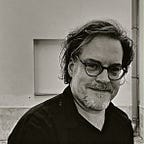Review: Neko Case — Making Bravura Poetry Out of the Friction Between Past and Present
By Bradley Bambarger <2006>
To hear Neko Case’s voice — pure, ringing and resonant of wide-open spaces — is to be transported back, as if her singing were soaring out of some prewar radio tuned to the Grand Ole Opry.
Yet behind the shades of sepia Americana is a thoroughly 21st-century artist, with a do-it-yourself savvy and a seeking, left-of-center muse. This friction between past and present tense made for bravura poetry in Case’s performance on the first sold-out night of two at New York City’s Webster Hall.
Case, a 35-year-old native of the Northwest, has made her name with a sequence of rootsy, reverb-drenched solo discs that sound like Patsy Cline gone noir. (She has also garnered fans by switching gears to sing occasional power-pop with the New Pornographers.) But the tingle factor was highest at Webster Hall when she showcased the richly textured, boldly off-kilter fables of her new album, Fox Confessor Brings the Flood.
That album’s title track, Case’s strangely disorienting revision of a folk tale handed down from Ukrainian relatives, floated on the shimmer of Paul Rigby’s beautiful tremolo guitar before she capped the song with the first of the night’s breathtaking a-cappella flourishes. Even over the dissonant jangle of banjo and guitar in “Maybe Sparrow,” Case’s vibrato-free voice rang out as clear and high as church bells.
Case’s foil for the evening, vocally and with hootenanny humor, was Kelly Hogan, whose spot-on harmonies were as essential to the band’s color as banjo, lap-steel guitar and woody double-bass. The close harmony for the American Gothic of “Dirty Knife” was aptly spectral, while “That Teenage Feeling” was massed vocal splendor (with singer Rachel Fotard of Closter joining in). Martha Wainwright — who opened the show with a characteristically poignant set, vulnerable and assertive by turns — added her voice to “Star Witness.”
It isn’t just how but what Case sings that has allure, as her lyrical outlook eschews penny-plain confession and observation in favor of allusion and ear-catching imagery. In “That Teenage Feeling,” regrets were “as common as a winter cold and telephone poles / They follow each other one after another, after another.” And in the gorgeous “Deep Red Bells” — from her 2002 album, Blacklisted — she sang about a memory that “tastes like being poor and small / And popsicles in summer.”
Case even imbues her covers with character, as with the sharp, plangent corners she put on the melody of the traditional “Wayfaring Stranger.” But with that big voice and flame-colored mane, she could also make it as a more mainstream torch singer, as she suggested with a sparsely accompanied, chest-tightening version of “Look for Me (I’ll Be Around).”
It was Case’s music to very old words for “John Saw That Number,” a counterintuitive recasting of the John the Baptist story that began by telling of “his meat of locusts and honey” in an otherworldly three-part choir with Hogan and Fotard. By the end of the rollicking follow-through, full band in tow, it was almost enough to inspire a non-believer to get religion.
(Originally published in 2006 in The Star-Ledger of New Jersey.)
